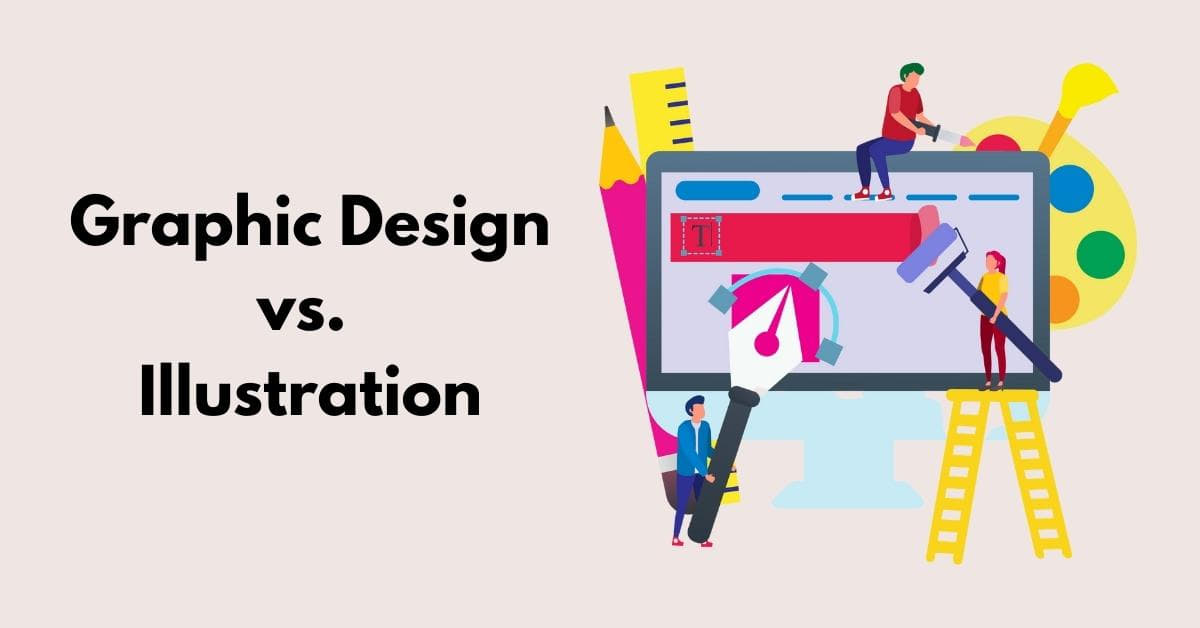In the dynamic realm of visual arts, two prominent players often find themselves in the spotlight: graphic design and illustration. While both crafts involve creative expression, they serve distinct purposes in the world of visual communication. This article delves into the nuances of graphic design and illustration, unraveling the differences and highlighting their unique contributions.
Graphic Design
Graphic design is a multifaceted discipline that integrates art, technology, and communication. It revolves around creating visual content to convey messages or information to a target audience. Graphic designers employ a combination of typography, image editing, and layout techniques to craft designs for various mediums, including print, digital, and multimedia platforms.
Key Characteristics of Graphic Design
- Purpose-driven: Graphic design focuses on solving visual communication problems, emphasizing functionality and clarity.
- Typography: The art of selecting and arranging fonts to enhance the visual appeal and readability of a design.
- Brand Consistency: Graphic designers play a crucial role in maintaining a consistent visual identity for brands across different platforms.
Illustration
Illustration, on the other hand, is a form of visual storytelling through images. Illustrators use their artistic skills to create images that enhance, clarify, or narrate a story. This could range from editorial illustrations, children’s book illustrations, to digital illustrations for websites and social media.
Key Characteristics of Illustration
- Narrative Element: Illustrations often tell a story or convey a concept through a single image or a series of images.
- Artistic Style: Illustrators bring their unique artistic styles to the table, making each illustration a personal and expressive creation.
- Emotional Impact: Illustrations have the power to evoke emotions and engage the audience on a more personal and visceral level.
Distinguishing Factors
- Functionality vs. Artistic Expression: While graphic design emphasizes functionality and solving visual problems, illustration is more about artistic expression and storytelling.
- Text-Centric vs. Image-Centric: Graphic design integrates text and visuals seamlessly, prioritizing legibility and hierarchy. In contrast, illustrations are often the focal point, relying on visuals to convey the message.
- Client Objectives: Graphic designers often work closely with clients to achieve specific communication goals, such as creating a brand identity or designing marketing materials. Illustrators, on the other hand, may be tasked with visually representing a narrative or concept.
FAQs
Is graphic design or illustration better for branding purposes?
Graphic design is more suitable for branding purposes as it focuses on creating a consistent visual identity across various platforms.
Can a graphic designer also be an illustrator, and vice versa?
Yes, many artists possess skills in both graphic design and illustration. The choice often depends on the specific project requirements.
Which software is commonly used in graphic design and illustration?
Adobe Creative Suite, including Photoshop, Illustrator, and InDesign, is widely used for both graphic design and illustration.
Do graphic designers only work on digital platforms?
No, graphic designers work on various platforms, including print, digital, and multimedia, depending on the project requirements.
Conclusion
In conclusion, graphic design and illustration, though interconnected, serve distinct roles in the world of visual communication. Whether you’re looking to convey a brand message or tell a captivating story, understanding the characteristics and differences between graphic design and illustration is crucial for making informed creative decisions.
This page was last edited on 28 February 2024, at 12:54 pm
